First off, I hope you enjoyed your 4th of July holiday! With everything going on, I'm sure it looked a little different, but hopefully you at least got to relax a bit. All of us here at RAWZ want to wish a happy 244th birthday to America! It was July 2nd, 1776, that the Continental Congress voted in favor of independence, and just two days later that the Declaration of Independence was formally adopted. The American colonists decided that a better life awaited them separated from Great Britain as an independent country. During this celebratory time, allow me to discuss the benefits of your pet declaring nutritional independence: Independence from a diet containing rendered ingredients! So what is a rendered ingredient?
Rendering
If you look at almost any (not RAWZ of course) pet food label you will see one, if not multiple, rendered ingredients. These ingredients, either a meat (chicken, beef, fish) meal, or fat from a specific protein source. Both are products of the rendering process; the harsh process that mixes animal parts together and cooks them between 250-280 degrees F for over an hour. The result is the fat as a liquid separated from the dried protein ground into a powder. So where do all these inputs for the rendering industry come from?
For much of the information in this discussion I rely on information from the North American Renderers Association's (NARA) website. NARA is the professional organization of the rendering industry formed in 1933. The first major concern of rendered ingredients is the ambiguity of meat rendered. It has long been the belief and policy of the FDA that, due to the intense processing rendering provides, rendered meals could contain dead, diseased, dying, or disabled animals (often referred to as 4-D). Following the scandalous news that Pentobarbital (the drug used to euthanize animals) had been found in some commercial pet foods, the FDA declared that "deceased animals, and animals that died otherwise than by slaughter", were no longer to be included in pet food.
Of course, no one wants to feed such ingredients to their pets, nor would believe that pet food companies would intentionally include them. The scary fact is that due to the vagueness of ingredient labeling laws, it wasn't until 4/30/19 that the FDA made the above declaration. Of course, pet owners were alarmed by these developments and following a citizen request for clarification of enforcement, a scarier reply was given: "We do not believe that the use of deceased animals, and animals that died otherwise than by slaughter to make animal food poses a safety concern and we intend to use enforcement discretion where appropriate." So to say that this guidance is not law and will hardly be enforced or even looked into is an understatement!
RELATED READING: WHAT'S IN THEIR BOWL? HERE'S HOW TO READ & DECODE A PET FOOD LABEL >
Protein Quality
I'm certainly not one to view all businesses as ruthlessly looking to maximize profit and using the lowest quality ingredients allowed, the history and inputs allowed of the rendering industry are concerning. But for the sake of argument: If the inputs to the rendering process are only of high quality, what difference does it make? The telling results of a 2012 study done by Dr. Greg Aldrich of Kansas State University provide the answer. To say Dr. Aldrich is an authority on animal nutrition is an understatement. His profile on KSU website notes that in addition to writing a monthly column for Pet Food Industry Magazine, "Dr. Aldrich holds a BS in Agriculture from Kansas State University (1984), an M.S. from the University of Missouri (1991) and a Ph.D. in Nutrition from the University of Illinois (1995). He has held several industry management and technical positions with Co-op Feeds, the Iams Company, Kemin Industries, Inc., and Menu Foods Ltd. He is a member of the American Society of Animal Science, American Society for Nutrition, and the American Academy of Veterinary Nutrition."
Dr. Aldrich's study compared the Protein Efficiency Ratios (PER) of a high quality chicken meal to dehydrated chicken. PER is simply a measure of how much of a protein is used in creating new tissue after being eaten. The dehydrated chicken is cooked at much lower temperatures for shorter durations resulting in a much more bioavailable (usable/efficient) protein ingredient. So what were the study's results: Dr. Aldrich reported that after the two vastly different methods of removing moisture were used, the rendered meal was left with a PER value of just 58% vs. 98% for the dehydrated chicken. These shocking results show that the less processed dehydrated chicken was nearly 70% more beneficial!
It isn't just that the protein is damaged through the harsh rendering process, but that once rendered these are often inferior ingredients to begin with. I'm certainly not inferring the rendering industry is evil. In fact, as stated on the NARA site: "Rendering is Recycling: Roughly 50% of an animal is considered inedible by Americans. Rendering reclaims this meat, bone and fat and transforms it into ingredients for countless products- Recycling 99% of this unwanted meat." Besides pet food, rendered ingredients are used in everything from biofuels, beauty products, fertilizer, and even paint. At RAWZ we just want to provide you with a better option for your pet.
So What?
While it is not the intent of this post to paint anyone in the animal nutrition industry as sinister or having only capitalistic intent, hopefully the results of Dr. Aldrich's study reveal the benefits of minimal processing. Not only does a higher PER value mean more bang for your buck when it comes to the protein building blocks in your pet's food, but also less unusable protein that the pet's body must process as waste. So if you're looking to feed a protein rich diet benefiting your pet avoiding the inclusion of rendered meals is a great start!






